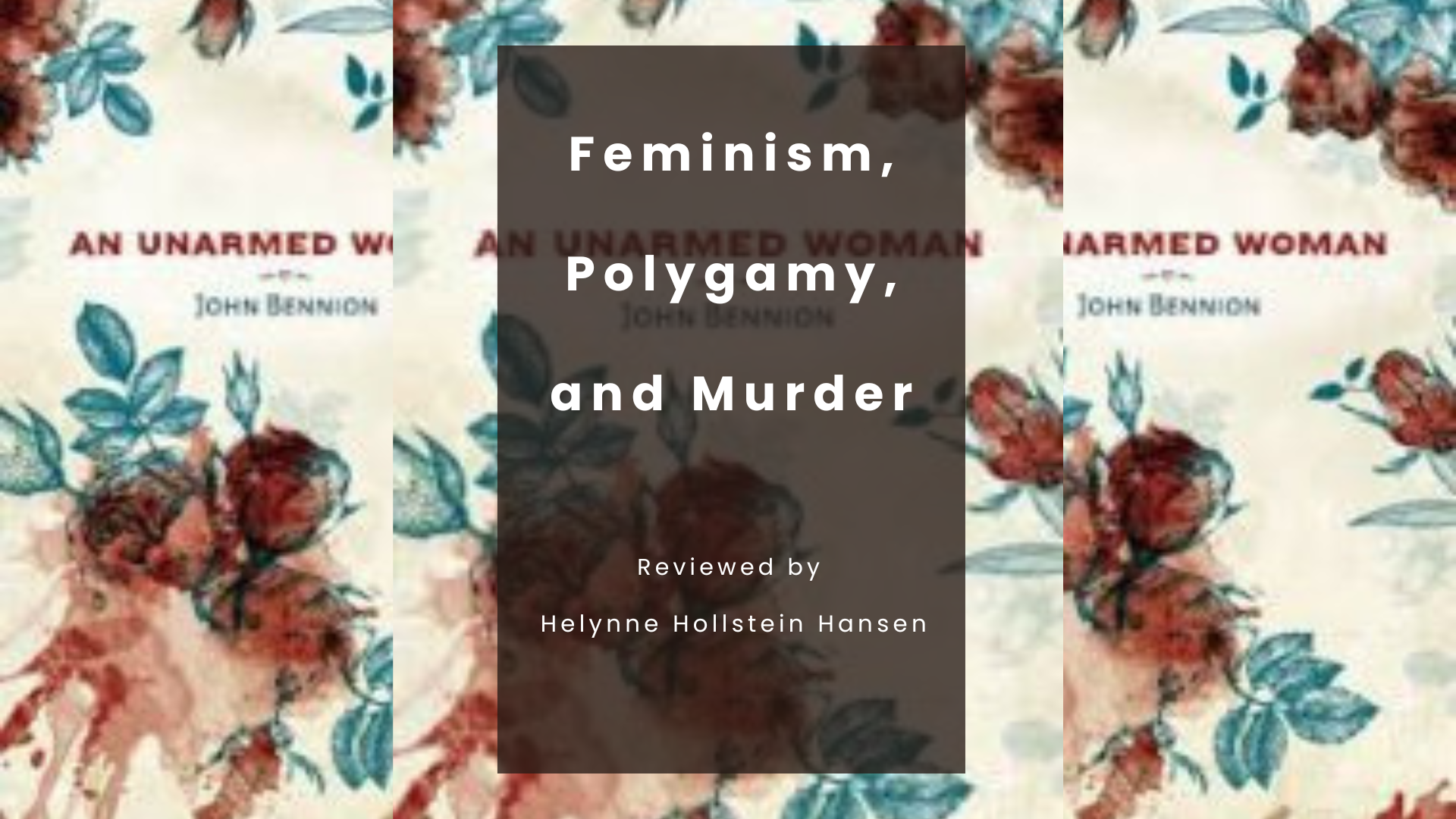Articles/Essays – Volume 52, No. 1
Feminism, Polygamy, and Murder | John Bennion, An Unarmed Woman.
“I’m like Alma’s daughters,” rough-and-tumble ranch girl Rachel O’Brian tells her polygamist stepfather J.D. Rockwell. “Someone has to speak up to you patriarchs” (118). An Unarmed Woman is a gripping murder mystery as well as a philosophical treatise on the cognitive dissonance that permeates the Principle in 1880s Utah Territory. Rachel, the title character and first-person narrator, struggles mightily with the expectations her community has placed on her and with her own tempestuous nature. Polygamy is constantly proclaimed in her milieu as divine. Her late mother was J.D.’s fifth wife, and Rachel, who is not yet eighteen, is being pressured to become the third wife of forty-year-old Ezekiel Wright. Nevertheless, Rachel has concluded that polygamy is “a seedbed of injustice, manipulation, and coercion” (139). The story will show her as “unarmed” not only in the literal, law-enforcement sense, but also in her stance as a rebellious, independent woman who is struggling with feelings of confusion and vulnerability.
John Bennion, longtime English professor at Brigham Young University, is probably best known for his contemporary novel Falling Toward Heaven, published in 2000. With this historical novel, he now proves himself adept at a describing the complexities of a crime drama in a volatile setting in late-nineteenth-century rural and polygamous Utah. The year is 1887, and four US laws have already been passed against plural marriage. The latest one, the Edmunds–Tucker Act, threatens to “put teeth” into a statute that is already shattering lives of Mormon families all over Utah Territory. In the community of Centre near the “gentile town” of Eureka, the winter is dangerously cold, federal deputies (dubbed “deps”) are prowling the region on horseback, and husbands with plural wives have been forced into hiding. Several unluckier ones have already been carted off to jail in Salt Lake City. Now, two of the “deps” have been shot dead at their campsite, and their bloody bodies placed in the underground store of Welsh convert William Apollo, who, though (apparently) not a polygamist, is part of the local bishopric. The prime suspects are the harassed polygamist husbands who are fed up with a government that will not allow them what they see as their First Amendment rights in their religious practice. But Rachel, who has followed J.D. on his bounty hunts and learned from his tracking and detective skills, is sharp enough to observe and sense that something does not quite add up.
Meanwhile, amid the shock of the crime and the fear of reprisal from more federal agents, the pros and cons of polygamy are bandied about in the community. Brother Apollo pounds the table: “No Gentile can comprehend the holiness of the Principle. Plural marriage can’t be adultery because the woman is given to the man, belonging to him and to no one else” (33). David Cooper, the local school teacher, hates the Principle and vows to see it eliminated. “Polygamy is an unnatural state. The prophet is a righteous man, but the yoke given to him is heavy. Soon he will throw it off or God will move on without him” (221). David’s fiancée and Rachel’s friend, Naomi, observes that one particular lecherous man “can’t even support one wife. Why would God make him a king in heaven just because he has made many women miserable?” (206). Rachel herself initially admires the essays of writer Emmeline B. Wells, a polygamous wife and a feminist who believes a woman should have a career as well as an intimate family relationship (73). “When I had read her words, I thrilled to the idealistic possibilities of polygamy” (198), Rachel admits. Wells preached that polygamy created a network of women in a household that allowed each wife more time to herself for developing her mind (12). But after much thought and observation, Rachel perceives that Wells’s defense of the Principle does not make up for the pain it causes: “polygamy seems to increase the opportunity for some men to be idiots” (190).
Bennion also fills his narrative with canny details of the period— weapons, horses, food preparation, etc. In chapter 16, his description of Rachel’s aching salivary glands during a long fast, especially as she helps prepare—but not yet taste—a family dinner of venison stew, buttery biscuits, jam, and apple brown betty, are particularly vivid. There is also a fearsome shotgun that can kill several ducks with one pull of the trigger, which may or may not foreshadow something sinister. But the thread running through the novel is J.D.’s efforts to find the killer or killers, who, righteously inspired or not, must be held accountable to the law of the land and the community. Rachel is involved every step of the way, sometimes to J.D.’s consternation, as he wishes his stepdaughter would settle down to domestic matters and act more like a lady. J.D. has to admit, though, that Rachel is a natural detective. Will she agree to ride obediently behind J.D. on her hated, back-breaking sidesaddle (“a device for torturing females” [118]) and stay mostly silent while he investigates the murder, or will she speak up about her own astute observations and play a real role in solving the mystery? Even more than a crime drama, this is a story of contradictions and confusion plaguing a community that has been sure enough of its own beliefs to defy the federal government—and pay the price. Bennion has tapped admirably into the spirit of this bewilderment from more than 130 years in the past.
John Bennion. An Unarmed Woman. Salt Lake City: Signature Books, 2019. 294 pp. Paperback: $18.95. ISBN: 978- 1560852766.


 Back to full Issue
Back to full Issue

